Horse Racing
Topic with 7 items
|
Title
|
Images
|
Item Comment
|
Prefix
|
Number
|
In set
|
Set
|
Set Comment
|
Type
|
Artist
|
Author
|
Size
|
Topics
|
Set Covers
|
Reference
| |
|---|---|---|---|---|---|---|---|---|---|---|---|---|---|---|---|
| 1 |
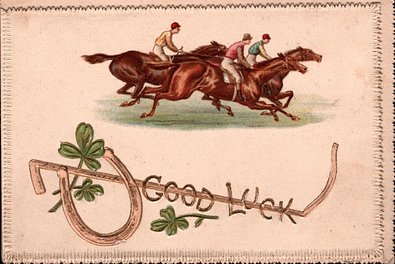
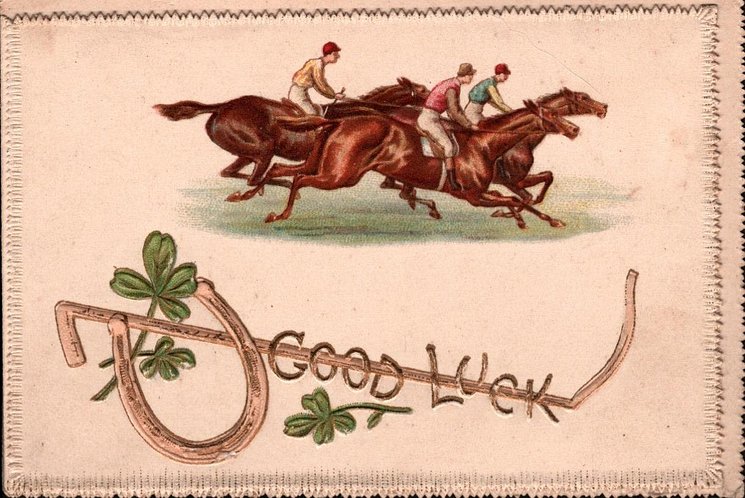


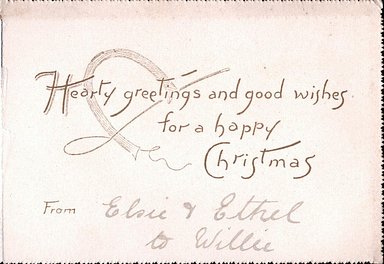

|
die-cut single sheet, single fold, finely serrated edges inside right:- HEARTY GREETINGS AND GOOD WISHES FOR A HAPPY CHRISTMAS -- FROM
|
|
|
QV RAFOLITH
|
back:- logo over TRADE MARK -- PUBLISHERS TO HER MAJESTY THE QUEEN -- RAPHAEL TUCK & SONS LTD -- LONDON ; PARIS ; NEW YORK -- DESIGNED AT THE STUDIOS IN ENGLAND AND PRINTED BY THE "RAFOLITH" PLATES IN SAXONY -- COPYRIGHT
|
|
|
7.4 x 10.3 cm.
|
|
| ||||
| 2 |



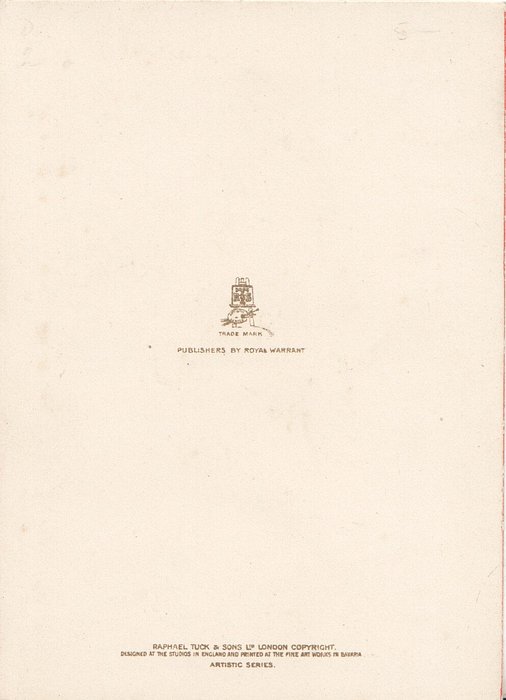


|
oblong single sheet, single fold, embossed inside right, top:-" THE BEST OF HAPPINESS, HONOUR AND FORTUNE KEEP WITH YOU" below:- HEARTY GREETINGS AND ALL GOOD WISHES FOR A HAPPY CHRISTMAS
|
|
|
QV Bavaria
|
Tuck logo above PUBLISHERS BY ROYAL WARRANT RAPHAEL TUCK & SONS LTD. LONDON COPYRIGHT DESIGNED AT THE STUDIOS IN ENGLAND AND PRINTED AT THE FINE ART WORKS IN BAVARIA ARTISTIC SERIES
|
|
SHAKESPEARE
|
8.5 x 11.7 cm.
|
|
| ||||
| 3 |
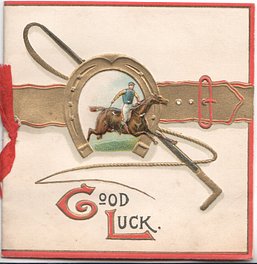




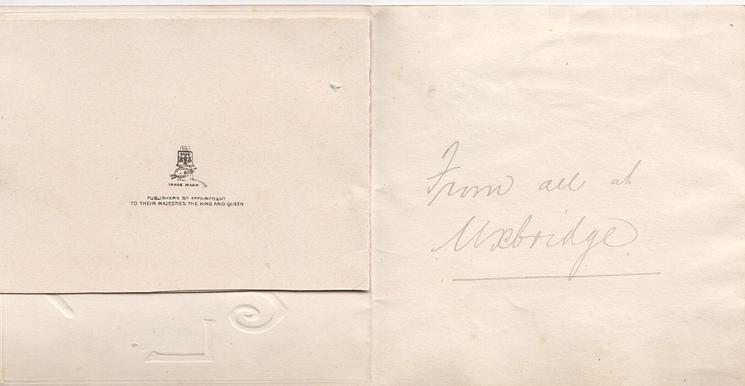
|
oblong celluloid cover & paper sheet secured by ribbon, embossed, single folded, 3 narrow red margins inside first right:- MAY YOU BE MERRY AND LACK NOTHING A RIGHT GOOD TIME TO YOU AND YOURS, THIS FAIR AND MERRY SEASON second:-HEARTY GOOD WISHES FOR A HAPPY CHRISTMAS
|
|
|
KED&KGV
|
logo over PUBLISHERS BY APPOINTMENT TO THEIR MAJESTIES THE KING AND QUEEN without place of manufacture
|
|
|
9 x 9.2 cm
|
|
| ||||
| 4 |

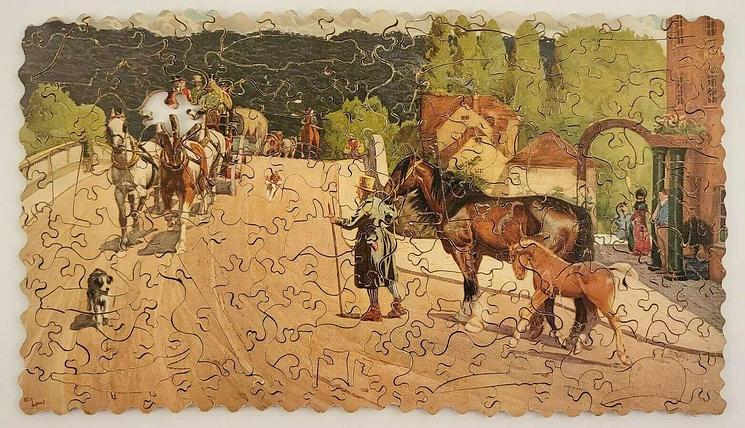
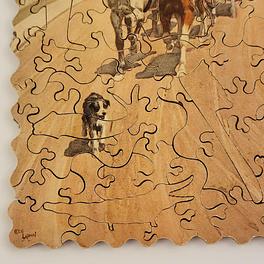


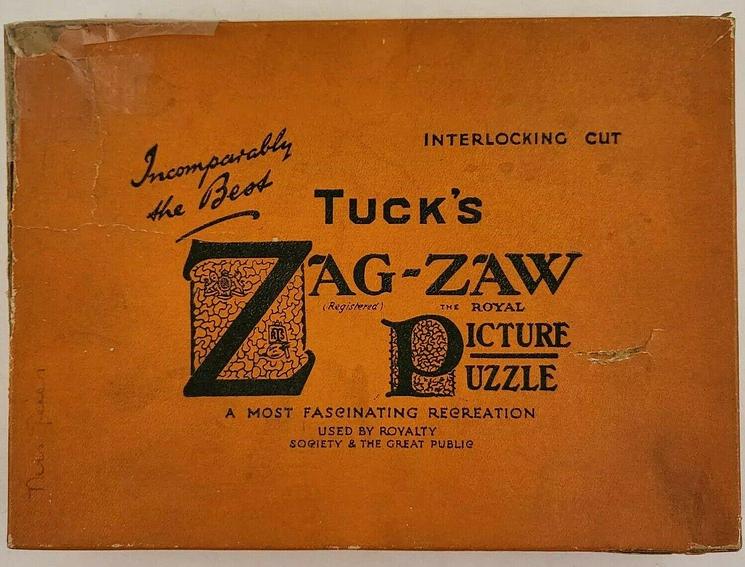

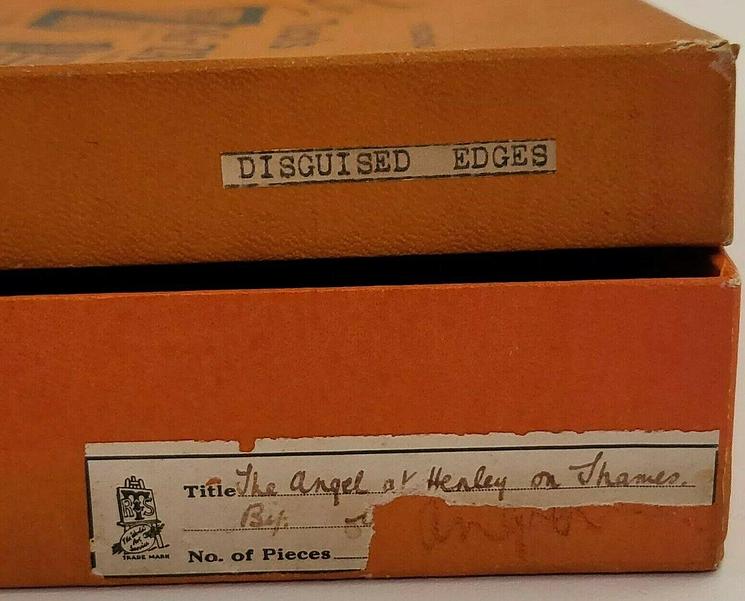
|
175 pieces, wooden, figurals, with box, missing one piece, DISQUISED EDGES, interlocking style, Cecil Alden painted this image titled "The Oxford Road - The Angel at Henley (on Thames)" around 1908
|
|
|
|
Zag-Zaw line of puzzles was first produced in 1909, most incorporate figurals or whimsies, sold in red, orange, or occasionally green boxes with labels on the side or bottom of the box, most without guide pictures. Initially cut non-interlocking but by 1930's became more so. Puzzles have a different cuts so that the same image will come in several versions which means that missing pieces can not be taken from other puzzles with the same image. The puzzle labels are often hand written and come with minor variations in titles and details. Some have a DESIGN category on the label. From my readings this refers to the style of cut, wavy lines, figurals, etc. See also Bob Armstrong's website on old jigsaw puzzles
|
CECIL ALDIN
|
|
12 x 7 in.
|
|
| ||||
| 5 |


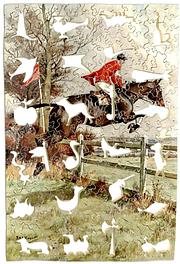



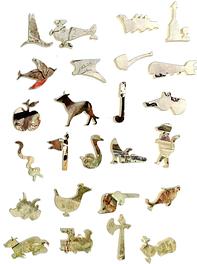


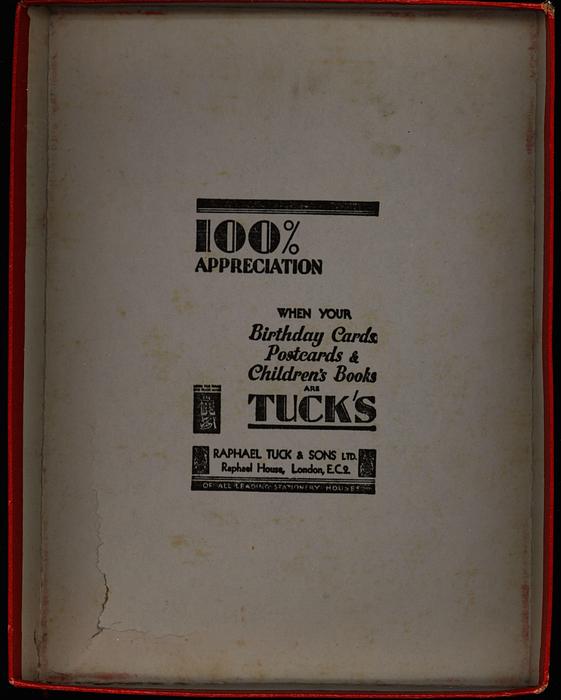



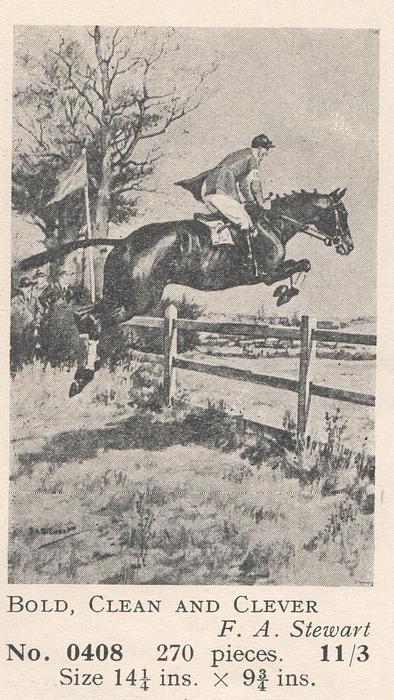
|
ABOUT 270 PIECES, wooden, figurals, complete with box, interlocking style, listed and described in the catalogs as number 0408
|
|
|
|
Zag-Zaw line of puzzles was first produced in 1909, most incorporate figurals or whimsies, sold in red, orange, or occasionally green boxes with labels on the side or bottom of the box, most without guide pictures. Initially cut non-interlocking but by 1930's became more so. Puzzles have a different cuts so that the same image will come in several versions which means that missing pieces can not be taken from other puzzles with the same image. The puzzle labels are often hand written and come with minor variations in titles and details. Some have a DESIGN category on the label. From my readings this refers to the style of cut, wavy lines, figurals, etc. See also Bob Armstrong's website on old jigsaw puzzles
|
F. A. STEWART
|
|
9 1/2 x 14 in.
|
|
| ||||
| 6 |
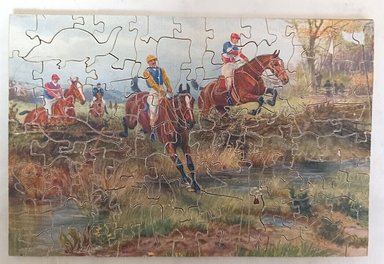

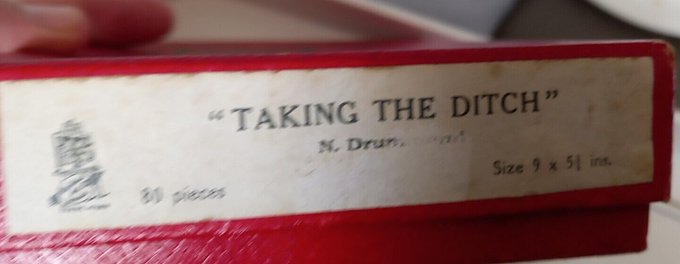
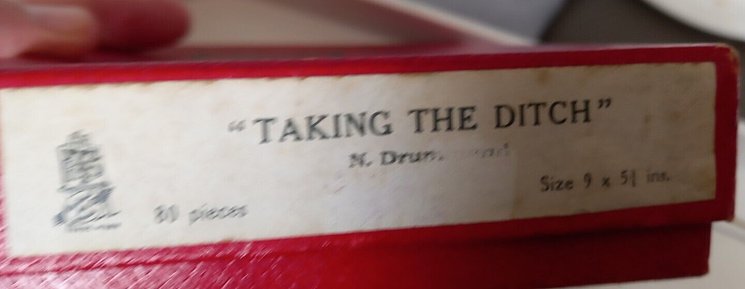
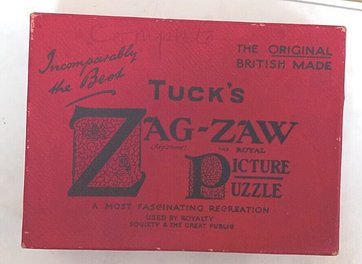

|
80 pieces, wooden, figurals, complete but one missing nib, interlocking style
|
|
|
|
Zag-Zaw line of puzzles was first produced in 1909, most incorporate figurals or whimsies, sold in red, orange, or occasionally green boxes with labels on the side or bottom of the box, most without guide pictures. Initially cut non-interlocking but by 1930's became more so. Puzzles have a different cuts so that the same image will come in several versions which means that missing pieces can not be taken from other puzzles with the same image. The puzzle labels are often hand written and come with minor variations in titles and details. Some have a DESIGN catergory on the label. From my readings this refers to the style of cut, wavy lines, figurals, etc. See also Bob Armstrong's website on old jigsaw puzzles
|
|
|
|
|
| ||||
| 7 |



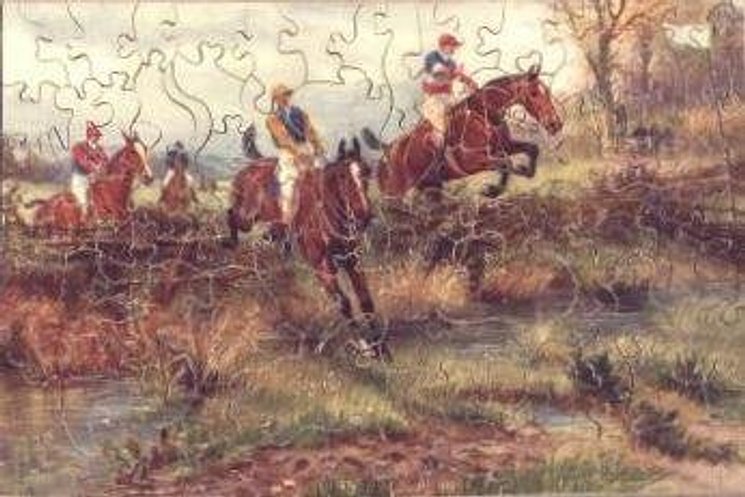
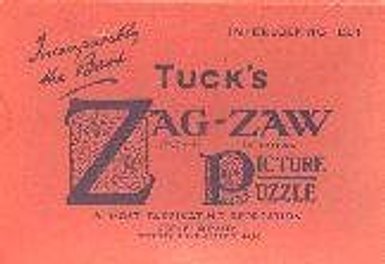
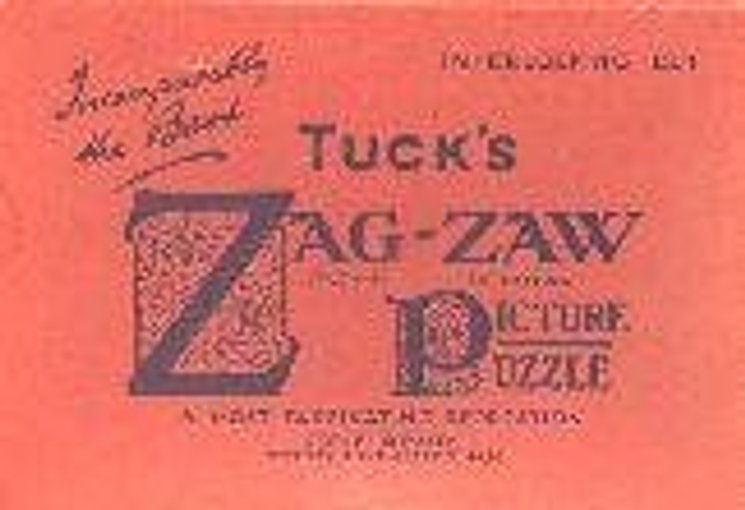
|
80 pieces, wooden, figurals, two missing pieces, interlocking style
|
|
|
|
Zag-Zaw line of puzzles was first produced in 1909, most incorporate figurals or whimsies, sold in red, orange, or occasionally green boxes with labels on the side or bottom of the box, most without guide pictures. Initially cut non-interlocking but by 1930's became more so. Puzzles have a different cuts so that the same image will come in several versions which means that missing pieces can not be taken from other puzzles with the same image. The puzzle labels are often hand written and come with minor variations in titles and details. Some have a DESIGN catergory on the label. From my readings this refers to the style of cut, wavy lines, figurals, etc. See also Bob Armstrong's website on old jigsaw puzzles
|
|
|
|
|
|